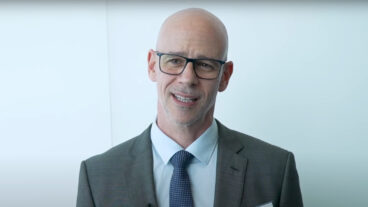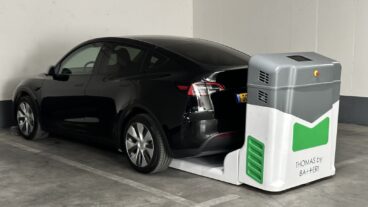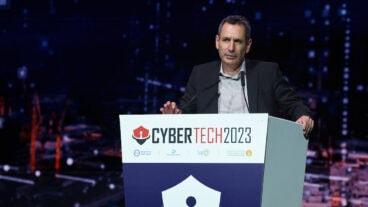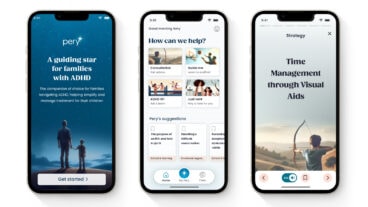Mofet Etzion’s Light Improved Ballistic Armor which will protect EFVs like this combines hardness and toughness and is full of anti-vandalism properties. A kibbutz on the West Bank is not the most likely of places to find a research and development center which has developed a revolutionary light armor for military vehicles.
Then again, maybe it is.
With years of suicide bombings and roadside attacks providing ‘real life’ experience, the Light Improved Ballistic Armor (LIBA) invented by Dr. Michael Cohen at his company Mofet Etzion, has been proven to be highly effective at saving lives. So much so that the company has recently been awarded a contract to provide the armor for over 1000 US Marine Expeditionary Fighting Vehicles (EFV) – the army’s main form of transportation in hot spots like Iraq and Afghanistan.
Housed in Kibbutz Kfar Etzion in the Etzion bloc of the West Bank south of Jerusalem, Mofet Etzion has grown from the sole vision of former kibbutznik Cohen into an internationally acclaimed company in less than 10 years.
“Dr. Cohen’s an inventor – in the true sense of the word. His mind is always working,” Mofet’s director of overseas marketing Yaacov Taube told ISRAEL21c. “While he was a member of the kibbutz, he invented a number of devices, including one that prevents a bullet from accidentally being discharged from a rifle. He had a friend in the army who died from that, and he decided to invent something to prevent it from happening to others.”
From there he started looking for other ideas for saving lives, and came upon the concept of using lightweight ceramic material for armor
“Armor made of ceramics might sound like an oxymoron – ceramics are generally breakable, and brittle. But what Cohen was able to do in his lab, was develop a ceramic that’s hard like diamonds, but not brittle. It combined hardness and toughness and is full of anti-vandalism properties. He called it LIBA – Light Improved Ballistic Armor,” said Taube.
Designed to stop a range of armor piercing munitions, LIBA is lighter and easier to maintain than conventional ceramic tile armor. According to Taube, changing battlefield realities – including the use of armor piercing ammunition and lethal Improvised Explosive Devices (IED – the military term for makeshift roadside bombs) – have challenged traditional military thinking as never before.
Cohen put his new material through extensive testing – including extreme challenges like having a tank drive over it, a bulldozer crush it, or an axe try to break it up.
“You see the ax going to it, and then you see the blade of the ax start to fall apart,” said Taube.
But what sets LIBA apart from other armor, according to Taube, is its ability to withstand armor piercing projectiles, its versatility making it easy to repair under field conditions, and its multi-impact protection.
“There is other ceramic armor out there – basically made of ceramic tiles. While those materials are able to stand up to one or two shots, our material is multi-hit. For a 10×12 inch panel, it can absorb up to 20 to 25 shots without reaching the V50 – that’s the ballistic term at which point the panel disintegrates. That’s quite good, and what armies are looking for when armoring vehicles,” he said.
“Another feature is that that armor can be repaired quite easily and quickly. When a panel gets hit in the field, that particular spot where it was hit won’t be bullet proof if another projectile hits the same spot. We made it possible for the crew to repair the panel quite quickly.”
“In addition, the LIBA is very light – it’s appropriate for fixed wing or rotary wing aircraft, and for body armor where it’s very important for it to be light when soldiers have to walk around with it for hours.”
As a result of the ballistic breakthrough pioneered by Cohen, LIBA armor protection began finding its way into vehicles used by the Israeli Army and Police as well as the Defense Ministry. Mofet Etzion has armored hundreds of vehicles (tracked and wheeled APC’s, jeeps (military and civilian), helicopters, trucks, busses, ambulances and private cars and limousines.
Many of these vehicles have been involved in terror attacks and battlefield conditions including roadside bombs (IED) and light and heavy weapon assaults by armored piercing projectiles and shell fragments. To date none of these vehicles have suffered penetrations to the armor or casualties.
Among the examples of LIBA saving lives cited by Mofet include a body armor panel that was used in a firefight between the IDF and terrorists in Nablus in the summer of 2002. A soldier was hit in the chest but only received minor bruises thanks to LIBA.
In another instance, during an ambush in Hebron in 2003, a member of the Jewish community there made a daring attempt at evacuating wounded fighters using a civilian LIBA armored patrol jeep – a Land Rover.
It was only a matter of time until one of the world’s leading producers of land and amphibious combat systems – Virginia-based General Dynamics – heard about it. Its subsidiary General Dynamics Land Systems, headquartered in Sterling Heights, Michigan, designs and builds armored vehicles and subsystems for the US Army, Marine Corps, and international customers, and is the defense industry’s largest supplier of armored military vehicles.
“They contacted us when they were looking for an armor solution to the EFV, the most commonly used US military vehicle by the Marines,” said Taube.
After the Pentagon awarded GDLS a $19 million contract for the production of 1,013 EFVs, the company turned to Mofet Etzion to provide its LIBA armor protection. According to Taube, production will begin early next year.
The EFV represents the Marine Corps primary means of tactical mobility during the conduct of amphibious operations and subsequent ground combat operations ashore. The EFV is a self-deploying, high-water-speed, armored amphibious vehicle capable of seamlessly transporting Marines from Naval ships located beyond the visual horizon to inland objectives. While providing the speed and maneuvering capabilities to operate with the main battle tank on land, current obstacles to the landing force, oceans, lakes and rivers, can be used by the EFV as high speed avenues of approach and maneuver.
The EFV is an armored, fully tracked infantry combat vehicle that will be operated and maintained by a crew of three Marines, and have a troop capacity of 17 Marines with their individual combat equipment. The EFV is a replacement for the current Assault Amphibian Vehicle (AAV) which was originally fielded in 1972.
According to Taube, LIBA is already being used on Marine vehicles in Iraq and Afghanistan, including the Stryker and the Pandur.
“One of the biggest problems facing American troops now in Iraq is the issue of IEDs – improvised explosive devices, or roadside bombs. The problem is the type of explosive is not very standard – every bomb maker adds his own input. As we know form suicide bus bombings, in addition to TNT, or mortar, items like nails are added to make it more devastating,” said Taube.
“The LIBA is able to defend against this kind of threat. There aren’t many kinds of armor – outside of 12 inch thick chunks of steel which are prohibitive due to weight – that can make that claim.”
“What differentiates our armor from other types – and the main reason why Dr. Cohen’s discovery is so important – is that he was able to discover armor that can stand up to armor piercing. With this feature, we have a special niche, and that’s why General Dynamics became interested in us. As terrorists have developed more threats that can achieve a projectile that will pierce regular armor, everything’s been pushed ahead. It’s like musical chairs,” he said.
For that reason, Mofet and its guiding light – Cohen – are engaged in an ongoing program of research and development in all types of ceramic materials and their composites, in order to defeat the ever-growing lethal threats of the modern battlefield, and the war on terrorism.
While Cohen still lives on the kibbutz, he is no longer a member. In order to retain ownership of Mofet, he had to officially leave the kibbutz, and he now owns 50% of the company with the kibbutz owning the other half. About half of the company’s 25 full time employees are kibbutz members.
According to Taube, the fact that the company is located in the politically sensitive West Bank has not been a factor in its ability to attract clients and business – citing extensive contacts in Europe and the Far East.
“It doesn’t really matter where we are – our revolutionary armor technologies have placed us in the first rank of world class armor companies.”












